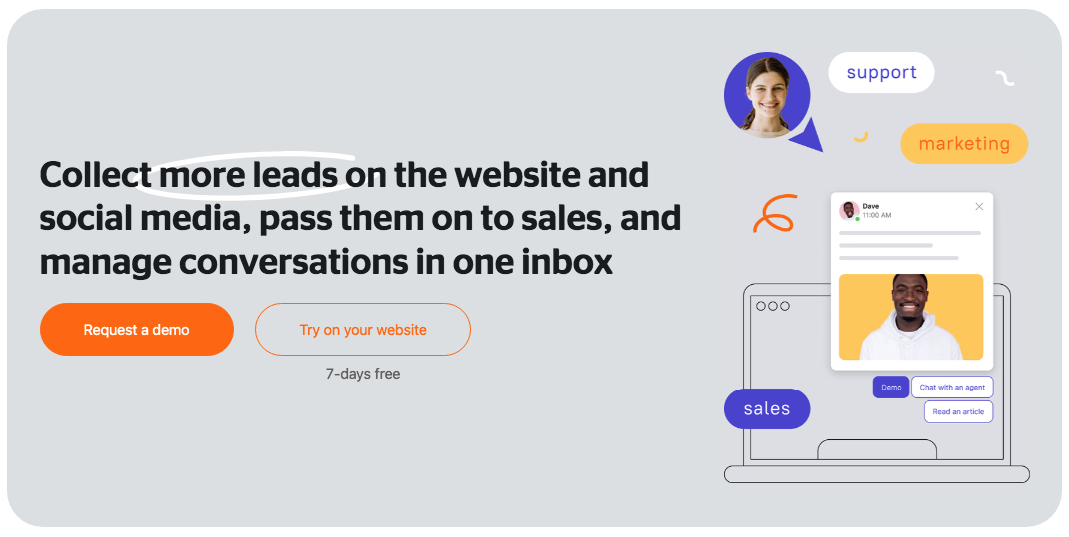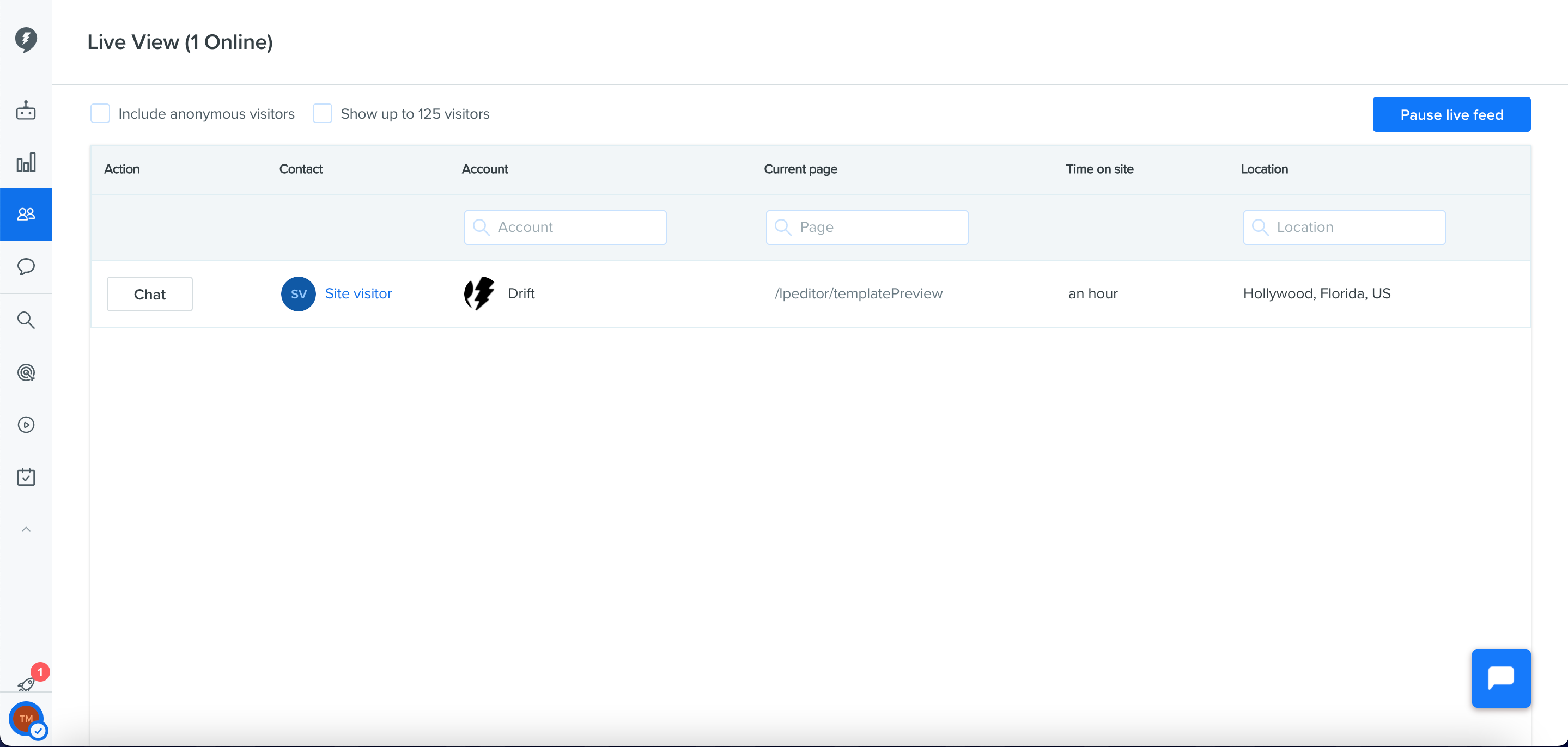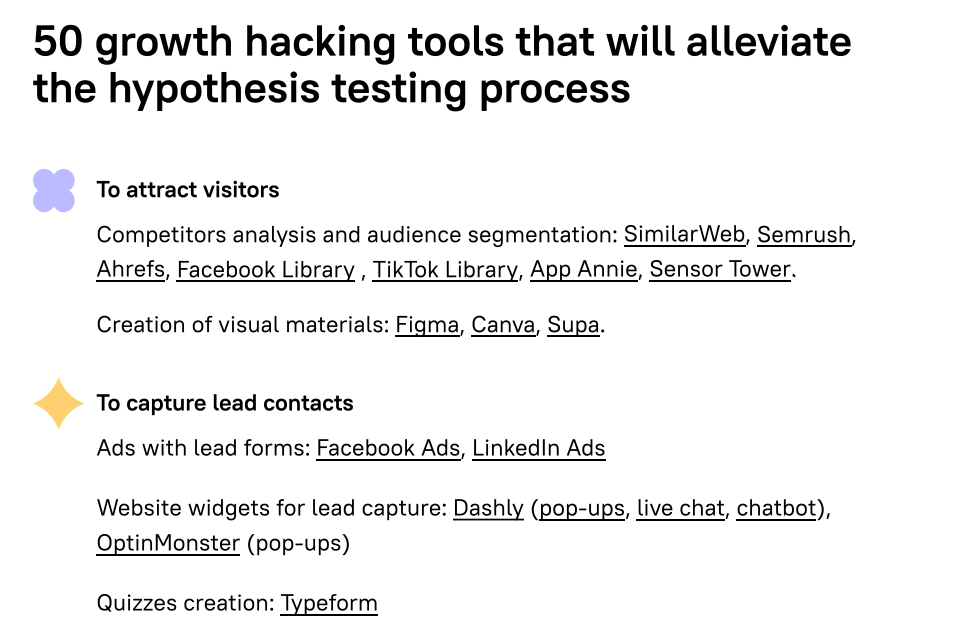Top 10 PLG tools for your Product-Led Growth [tested by experts]
![Top 10 PLG tools for your Product-Led Growth [tested by experts]](https://www.dashly.io/blog/wp-content/uploads/2023/08/20-tools-to-boost-your-Product-led-Growth-1440x634.jpg)
Navigating the rapidly evolving business landscape can feel like a daunting task, particularly when it comes to choosing the right growth strategy. With a myriad of growth marketing tools and methods at your disposal, finding the most effective and sustainable approach may seem like finding a needle in a haystack. If you’ve been considering leveraging your product to drive growth, then embracing a Product-Led Growth (PLG) strategy can be a game-changer. However, with the multitude of PLG tools in the market, how do business growth experts select the ones that will truly catapult your business to new heights?
This is where our comprehensive guide comes in. This read is designed to demystify PLG tools, helping you understand their role, identify key features, and choose the ones that best align with your business goals.
What is Product-Led Growth?
Product-Led Growth, or PLG as it’s commonly referred to, is a transformative, product-centric business methodology that places the product at the heart of a company’s growth strategies. In product-led growth, the product becomes the hero of the story, serving as the primary catalyst for customer acquisition, conversion, and expansion.
Unlike traditional growth methods that are often sales-focused and revolve around aggressive pitches or marketing campaigns, PLG flips the script. It leverages the inherent value, usability, and appeal of the product to attract, engage, and retain customers. It’s about showcasing your product’s ability to solve a problem or fulfill a need that entices potential customer led growth.
At the core of a successful PLG strategy is the creation and continuous improvement of a product that is not just useful but intuitive, user-friendly, and packed full of value.
The goal is to create a product experience that is so seamless and beneficial that it prompts users to integrate it into their routines, essentially making the product sell itself.
Read more:
PLG and product managing
Product led growth marketing is not just a boon for overall business development, it is a catalyst that significantly elevates the role and effectiveness of product management. By adopting a product-led strategy, product managers can gain a clearer, data-driven understanding of customer needs, preferences, and behaviors, allowing them to make informed, strategic decisions that directly contribute to growth. It empowers product managers to design and deliver products that are not just market-ready, but customer-approved, leading to higher customer satisfaction and loyalty.
Moreover, it presents opportunities for product managers to innovate and continually improve the product based on real user feedback, driving product excellence. In essence, a product-led strategy is a powerful tool that transforms product management from a supportive function into a central growth driver, setting the stage for business success in today’s customer-centric era.
PLG and product experience
Sure enough, a product-led growth strategy is a pivotal game-changer when it comes to enhancing product experience. It places the user’s experience with the product as the cornerstone of growth loops, thereby ensuring that every feature, functionality, and interface is designed with the user’s needs and convenience in mind.
PLG allows customers to directly interact with and experience the product’s value before they make a purchasing decision. This try-before-you-buy approach empowers customers, leading to more informed decisions and, consequently, a higher level of overall customer satisfaction.
Take, for instance, the popular communication platform, Slack. Their product-led approach focuses on creating an intuitive, user-friendly environment that makes team collaboration seamless and efficient — a key reason why users love and stick with their platform.
Similarly, streaming service Netflix uses a product-led strategy to personalize user experience, leveraging sophisticated algorithms to recommend shows and movies based on a user’s viewing history.
By prioritizing product experience, these companies not only meet customer needs but often exceed them, leading to higher satisfaction, loyalty, and ultimately, business growth. In essence, a product-led strategy is a powerful lever that transforms product experience from merely satisfactory to truly exceptional, delighting users and driving sustained business success.
Read also: Your free growth marketing strategy template
What Are Product-Led Growth Tools?
Product-Led Growth (PLG) tools are specialized software solutions designed to bolster and amplify the effectiveness of a PLG strategy. These growth marketing services are geared towards helping businesses position their product at the center of their growth strategy, focusing on delivering an exceptional user experience that drives customer acquisition, retention, and expansion.
PLG tools encompass a range of functionalities. They can help businesses optimize their product based on real user feedback and growth marketing analytics, enhance user experience through personalized onboarding and support, and manage customer relationships more effectively through improved communication and engagement. They also provide critical insights into how users interact with your product, enabling your growth marketing team to understand user’s journey, from the initial contact through to conversion and beyond.
These tools can monitor user behavior in real-time, providing data on usage patterns, feature engagement, and more. This data can guide product development, inform marketing strategies, and help identify potential upsell or cross-sell opportunities. Additionally, PLG tools often include features that provide personalized, in-app experiences. These can guide users towards desired actions, enhance user engagement, and increase the perceived value of your product.
However, the landscape of PLG tools is vast and varied, with each tool offering a unique mix of features. Selecting the right tools for your PLG stack can feel overwhelming. But fear not, we will provide an in-depth comparison of several leading PLG tools, looking at their pros and cons and highlighting how each can contribute to a PLG strategy.
Must-Have Features of Good Product-Led Growth Tools
We’ve followed the following criteria when picking tools for product metrics framework analytics — the PLG tools should include such features as:
- User Analytics. To understand how customers interact with your product, analytics are crucial. They provide insights into user behavior, helping you identify patterns, trends, and areas for improvement.
- User Onboarding. Effective onboarding can drastically improve user experience, increase product adoption, and reduce churn. Look for tools that offer customizable onboarding flows.
- In-App Messaging. Direct communication with your users within the product can help guide them through the user journey, answer their questions, and encourage them to fully explore your product.
- Automation. Automated features can save time and increase efficiency. This can range from automating onboarding flows to sending personalized, behavior-triggered messages.
- Integrations. PLG tools should integrate well with your existing tech stack to ensure seamless data flow and efficient processes.
Read also:
👉 Live Chat Best Practices: 20 Hacks to Make Customer Service Better
👉7 Best Live Chat for eCommerce: Boost Conversion on your Website
👉 Top 5 live chat mobile app: find the best fit for your business
👉 Live Chat: How Online Chat Tool Can Help Your Business
👉 20 Best Live Chat Software for your website chat service
The List of PLG Tools
With the must-have features in mind, let’s take a look at nine PLG tools, each with their unique strengths and weaknesses.
Dashly

Dashly is a multifaceted tool designed to streamline and enhance your business’s interaction with customers.
Pros
- User Tracking. At the heart of a successful PLG strategy is deep understanding of customer behavior, and Dashly’s robust user tracking features deliver this insight. It allows businesses to monitor user interactions with their product, providing a granular view of user behavior. This can help businesses identify trends, understand user needs, and adapt their products and strategies accordingly.
- Lead Generation tools. In the world of PLG, every visitor is a potential user of your product. Dashly excels in converting these potential users into leads. With dynamic pop-ups, online forms, chatbots, Dashly engages visitors effectively and captures their information, paving the way for further engagement and potential conversion.
If you’re interested in more details, check out Dashly’s customer success story involving the use of chatbots, as well as with livechat and triggered messages. - Email Marketing. Dashly’s comprehensive email marketing features help nurture these leads towards conversion. With the ability to create personalized, engaging emails, businesses can provide value to leads right in their inbox. The platform also supports A/B testing, allowing businesses to optimize their emails for better performance.
- Live Chat. PLG revolves around the idea of using the product as the main driver of customer acquisition, conversion, and expansion. Effective communication and quick resolution of queries are essential in this strategy, and that’s where live chat comes in. With Dashly’s live chat feature, users can get instant responses to their queries or issues. This real-time, personalized communication enhances the user experience, helps remove any hurdles in using the product, and can expedite the customer’s journey from a free trial or freemium user to a paying customer.
- Integrations. Dashly’s seamless integration with most Customer Relationship Management (CRM) systems ensures an efficient flow of data between platforms. This ability to sync and manage customer data across platforms is crucial to providing a seamless user experience, which is a cornerstone of PLG.
Cons
Its user interface might be slightly intimidating for those unfamiliar with customer communication platforms but the support team is always here to solve any issue.
Read also: Customer engagement strategy template to create omnichannel campaigns
Intercom
Intercom is a customer messaging platform that prioritizes real-time, personalized interactions to foster customer relationships and drive business growth.
Pros
- Messaging-First Products. Intercom provides a suite of products designed with a messaging-first approach. This includes chatbots, live chat, and targeted email and in-app messages, allowing businesses to communicate with customers effectively at different stages of the customer journey.
- User Analytics. Intercom delivers robust user analytics, providing businesses with valuable insights into customer behavior. This can help businesses understand customer needs better and tailor their communication and offerings accordingly.
- User Onboarding. With intercom, businesses can create customized onboarding flows to guide new users through the product, improving user experience, and increasing product adoption.
- In-App Messaging. Intercom excels in in-app messaging. Businesses can use this feature to send targeted messages to users while they’re using the product, enhancing engagement and guiding users towards desired actions.
- Automation tools. Intercom offers automation features that can save businesses considerable time. For example, businesses can automate responses to commonly asked questions, freeing up time for customer service representatives to handle more complex queries.
- Integrations. Intercom integrates well with other business tools, ensuring seamless data flow and improved efficiency.
Cons
Might be on the pricier side for smaller businesses or startups.
Mixpanel
A favored choice among businesses looking to understand and improve their customer experience, Mixpanel presents a potent range of features that perfectly align with a product-led growth (PLG) strategy. With a focus on mobile and web, Mixpanel allows businesses to track customer interactions and analyze user behavior in-depth.
Pros
- User Analytics. Mixpanel’s comprehensive user analytics give businesses the ability to track and analyze user behavior across both mobile and web platforms. For a PLG strategy, where understanding how users interact with your product is paramount to driving improvement and growth, these are critical factors.
- Powerful Analysis Capabilities. Beyond basic analytics, Mixpanel offers advanced analysis capabilities, such as funnel analysis, cohort analysis, and retention analysis. These features enable businesses to delve deeper into their user data and gain a more nuanced understanding of user behavior, which can guide product improvements, b2b growth marketing strategies, and customer communication in a PLG approach.
- User Onboarding. Mixpanel’s capabilities extend to user onboarding, a crucial aspect of PLG. With features that allow businesses to guide new users through the product and monitor their initial experiences, Mixpanel ensures that the first impression is a positive one, setting the stage for user retention and growth.
- Integrations. Mixpanel’s ability to integrate with other business tools ensures that customer data can flow freely across platforms, providing a holistic view of the customer journey.
Cons
While Mixpanel offers powerful analytics capabilities, its interface can be quite complex, particularly for newcomers.
Read also: 10 conversion rate optimization tools to enhance your funnel and boost revenue
Pendo
Pendo is a product experience platform that empowers businesses to understand and guide users towards desired outcomes.
Pros
- Product Analytics. Pendo provides robust product analytics that give businesses a deep understanding of how users interact with their product.
- Surveys. Pendo allows businesses to gather user feedback directly through in-app surveys. This feature provides an effective way for businesses to understand user needs, measure satisfaction, and identify areas for improvement.
- User Guidance. With Pendo, businesses can create in-app guides that help users understand and navigate the product effectively. This feature can improve user experience, increase product adoption, and reduce user frustration.
- Scalability. Pendo is designed to handle large volumes of data and users, making it an excellent choice for large teams or businesses with a significant customer base.
- Integrations. Pendo integrates with various other business tools, from Calendly to Zendesk.
Cons
The platform’s pricing structure might be a hindrance for smaller businesses or startups. The platform is priced based on the number of users, which could make it less cost-effective for businesses with a small user base.
Free expert insights to boost your marketing strategy and raise conversion to a target action by 10%

UserIQ
UserIQ combines user analytics, onboarding assistance, and communication tools into a single, comprehensive solution.
Pros
- User Analytics. UserIQ offers robust user analytics that empower businesses to understand user behavior and product usage patterns. These insights can guide product development, marketing strategies, and enhance customer communication.
- Onboarding. With UserIQ’s onboarding capabilities, businesses can create personalized onboarding experiences that guide users through the initial stages of product usage. This can significantly improve user experience, increase product adoption, and reduce churn.
- Communication Tools. UserIQ provides a suite of communication tools, including in-app messaging, email campaigns, and user surveys, that enable businesses to engage with their users effectively. These tools can help businesses provide timely support, gather user feedback, and promote new features or updates.
- Automation features. This can save businesses time and ensure that users receive consistent, high-quality support.
- Integrations
Cons
A steep learning curve: the platform’s extensive capabilities may be overwhelming for users, particularly if they’re new to customer success platforms.
Drift

Drift’s conversational marketing and sales platform allows businesses to engage with customers in real-time, providing immediate value and forming strong customer relationships. This is especially crucial in a product-led growth strategy, where the product and the experiences surrounding it are the main drivers for business growth.
Pros
- Conversational Marketing and Sales Platform . Drift’s standout feature is its conversational marketing and sales platform. This allows businesses to connect with leads in real-time, providing immediate value and nurturing relationships right from the first interaction. In a PLG strategy, where the product and the experiences around it drive growth, this direct, immediate communication can greatly enhance user experience and accelerate conversions.
- Lead Generation. Drift excels at lead generation. Its intelligent chatbots can engage visitors on your website around the clock, answering queries and capturing leads even when your team is not available. This can significantly increase the number of quality leads and potential customers. In a PLG strategy, this ability to continuously engage and capture leads can be a significant driver of growth.
- Integrations. Drift integrates smoothly with other business tools. This seamless integration is even more critical in a PLG strategy where understanding and responding to user interactions with the product across various touchpoints is key to driving growth.
Cons
Pricing is on the higher end, which might make it less accessible for smaller businesses or startups operating on a tight budget.
Read also: 15 best lead generation services to grow your base in 2023
ProductBoard
ProductBoard is a product management platform that centralizes user insights and orchestrates product roadmapping
Pros
- User Insights. ProductBoard excels in providing user insights, allowing product teams to understand customer needs directly. This can help businesses develop products that genuinely resonate with their target market.
- Roadmapping. Roadmapping is an integral part of product development, and ProductBoard provides a comprehensive solution for this. It enables product teams to visualize their strategy, prioritize features, and track progress over time. This can significantly enhance the team’s ability to deliver successful products.
- Collaboration. ProductBoard fosters great collaboration among product teams. Its shared portal lets team members contribute insights, discuss ideas, and stay updated on the product’s development.
Cons
One area where ProductBoard could potentially improve is its integration capabilities. While it does integrate with some other tools, it may not offer as robust integration options as some other PLG tools. This could limit its ability to seamlessly fit into certain tech stacks or to facilitate smooth data flow between platforms.
Sleeknote
Sleeknote is a visitor engagement and lead generation tool designed to help businesses turn their website visitors into leads, subscribers, and customers.
Pros
- Visitor Engagement. Sleeknote shines in its ability to engage website visitors effectively. With a range of interactive features, such as pop-ups and slide-ins, Sleeknote allows businesses to catch the attention of visitors and encourage them to engage further.
- Lead Capture and Conversion. Sleeknote offers an array of tools that help businesses not just capture but also convert leads. From smart triggers that display messages at the right time to targeting rules that deliver personalized content, Sleeknote ensures that your lead capture efforts are optimized for conversion.
- User-Friendly Interface. One of the standout features of Sleeknote is its user-friendly interface. The platform is designed to be intuitive and easy to navigate, making it a great choice for businesses of all sizes, including those without a dedicated IT team or advanced technical knowledge.
Cons
While Sleeknote offers several features, it falls slightly short when it comes to advanced customization options. Although businesses can customize their messages and design elements like color and font, Sleeknote may not offer the level of detailed customization that some other PLG tools provide. This could limit some businesses in creating highly tailored and unique engagement strategies.
Read also: The 36 statistics on how chatbot for businesses grow your revenue in 2023
Gainsight
Gainsight is designed to help businesses cultivate customer loyalty, reduce churn, and foster growth.
Pros
- Customer Success Platform. Gainsight offers a robust customer success platform. This platform collects and analyzes customer data, allowing businesses to understand their customer’s needs, behavior, and usage patterns. This deep understanding can inform strategies to enhance customer experiences, a key aspect of a successful product-led growth strategy.
- Churn Reduction. Gainsight’s platform is particularly effective in reducing customer churn. By identifying at-risk clients early on, businesses can take proactive measures to address their concerns, ultimately improving retention rates. In a product-led growth model, customer retention is critical as it’s often more cost-effective than acquiring new customers.
- Upselling. Another strength of Gainsight is its ability to identify upselling opportunities. By understanding user behavior and needs, businesses can effectively suggest additional, relevant products or features to existing customers. This not only increases revenue operations (revops)performance but also deepens the customer’s engagement with the product.
- Integrations. Gainsight’s capability to integrate with other business tools ensures efficient data flow and synchronization, allowing businesses to get a comprehensive view of their customer’s journey and experiences.
Cons
Might be too complex and feature-heavy for small businesses. Additionally, smaller businesses might not be able to fully utilize all the features, making it less cost-effective for them.
Thanks! Here’s your copy of 50 growth hacking tools

Read also: The secret weapon of your competitors or Why you should focus on customer service first
Summing up
In the dynamic world of business, PLG tools play a pivotal role in driving sustainable and scalable growth. With a diverse range of capabilities, these tools empower businesses to understand their customers better, enhance product experience, and create value that truly resonates with the market. While some tools in user analytics and lead generation, others shine in customer success management and user engagement.
The common denominator, however, is their shared goal of placing the product at the heart of business growth strategies. Hopefully, this guide has helped you with taking confident first steps to harnessing the power of PLG tools and propelling your business to new heights. Here’s to that!
Read also: 17 Zendesk alternative services and 13 live chat alternatives to try this year
FAQ
Why is product-led growth important?
PLG is important because it allows businesses to attract, retain, and grow their customer base through the value of their product.
What are product-led growth tools?
PLG tools are software solutions designed to facilitate and enhance a product-led growth strategy.
What features should good PLG tools have?
Good PLG tools should offer user analytics, user onboarding, in-app messaging, automation, and integration with existing tech stacks.
Can any business implement a PLG strategy?
Yes, any business with a product or service that can demonstrate value to customers before a purchasing decision can implement a PLG strategy.
What are some examples of businesses that use PLG strategy?
Here are a few notable examples:
Slack. The popular collaboration tool offers a freemium model, allowing teams to use their platform for free and then upgrade to a paid plan for additional features. This allows users to experience the product’s value before committing financially.
Dropbox. The cloud storage platform also offers a freemium model, where users can start with a free, basic plan and then upgrade to premium plans for more space and features. This approach has helped Dropbox amass millions of users globally.
Zoom. The video conferencing tool had a successful PLG strategy, especially during the pandemic. They offered a robust free version of their product, which provided users with high-quality video calls. This led to a significant number of users upgrading to the paid version for more features.
Atlassian. Known for its suite of software development and collaboration tools, including Jira and Trello, Atlassian has effectively used PLG to drive its growth. By offering highly-functional products that teams love to use, Atlassian has mainly grown through word-of-mouth recommendations.
Read more:
- Demand generation vs Growth marketing
- 25 Growth Marketing Books to Skyrocket Success
- 22 SaaS growth hack Facebook tactics to boost your business
- Growth marketing playbook: 40+ templates for successful experiments
- RevOps tech stack: guide to the best tools
- Revenue operations metrics: 10 metrics and KPIs to track your performance
- Product led growth metrics: 13 key indicators for SaaS companies to track
- Benefits of Product led growth: 12 PLG benefits for your business
- Top 10 product led growth software your competitors use in 2023
- 10 product led growth companies that boost their development right now
- Sales led growth: what is it and why your business needs it
- Growth marketing case studies: 12 stories with detailed tactics and numbers achieved
- RevOps best practices: 13 tactics to implement this year
- Growth Product Manager: Charting new frontiers in product scaling
- 20 product led growth examples to inspire your team [expert edition]
- 16 best CX customer experience tools: software features and pricing




![The ultimate guide to growth marketing in 2025 [explained by a growth hacker]](https://www.dashly.io/blog/wp-content/uploads/2023/04/The-ultimate-guide-to-growth-marketing-explained-by-a-growth-hacker-720x317.png)
![Ultimate guide to creating a successful marketing growth strategy in 2025 [6 real-life examples]](https://www.dashly.io/blog/wp-content/uploads/2023/05/Expert-guide-to-creating-marketing-growth-strategy-6-examples-720x317.png)